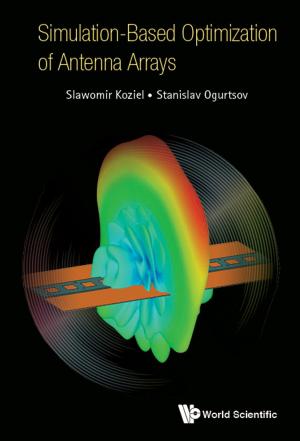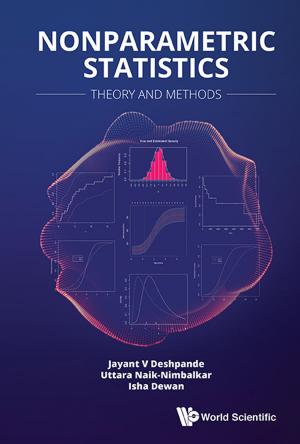Zeta Functions of Reductive Groups and Their Zeros
Nonfiction, Science & Nature, Mathematics, Number Theory, Geometry| Author: | Lin Weng | ISBN: | 9789813230668 |
| Publisher: | World Scientific Publishing Company | Publication: | February 7, 2018 |
| Imprint: | WSPC | Language: | English |
| Author: | Lin Weng |
| ISBN: | 9789813230668 |
| Publisher: | World Scientific Publishing Company |
| Publication: | February 7, 2018 |
| Imprint: | WSPC |
| Language: | English |
This book provides a systematic account of several breakthroughs in the modern theory of zeta functions. It contains two different approaches to introduce and study genuine zeta functions for reductive groups (and their maximal parabolic subgroups) defined over number fields. Namely, the geometric one, built up from stability of principal lattices and an arithmetic cohomology theory, and the analytic one, from Langlands' theory of Eisenstein systems and some techniques used in trace formula, respectively. Apparently different, they are unified via a Lafforgue type relation between Arthur's analytic truncations and parabolic reductions of Harder–Narasimhan and Atiyah–Bott. Dominated by the stability condition and/or the Lie structures embedded in, these zeta functions have a standard form of the functional equation, admit much more refined symmetric structures, and most surprisingly, satisfy a weak Riemann hypothesis. In addition, two levels of the distributions for their zeros are exposed, i.e. a classical one giving the Dirac symbol, and a secondary one conjecturally related to GUE.
This book is written not only for experts, but for graduate students as well. For example, it offers a summary of basic theories on Eisenstein series and stability of lattices and arithmetic principal torsors. The second part on rank two zeta functions can be used as an introduction course, containing a Siegel type treatment of cusps and fundamental domains, and an elementary approach to the trace formula involved. Being in the junctions of several branches and advanced topics of mathematics, these works are very complicated, the results are fundamental, and the theory exposes a fertile area for further research.
Contents:
- Non-Abelian Zeta Functions
- Rank Two Zeta Functions
- Eisenstein Periods and Multiple L-Functions
- Zeta Functions for Reductive Groups
- Algebraic, Analytic Structures and Rieman Hypothesis
- Geometric Structures and Riemann Hypothesis
- Five Essays on Arithmetic Cohomology
Readership: Graduate students and researchers in the theory of zeta functions.
Key Features:
- Genuine zeta functions for reductive groups over number fields are introduced and studied systematically, based on (i) fine parabolic structures and Lie structures involved, (ii) a new stability theory for arithmetic principal torsors over number fields, and (iii) trace formula via a geometric understanding of Arthur's analytic truncations
- For the first time in history, we prove a weak Riemann hypothesis for zeta functions of reductive groups defined over number fields
- Not only the theory is explained, but the process of building the theory is elaborated in great detail
This book provides a systematic account of several breakthroughs in the modern theory of zeta functions. It contains two different approaches to introduce and study genuine zeta functions for reductive groups (and their maximal parabolic subgroups) defined over number fields. Namely, the geometric one, built up from stability of principal lattices and an arithmetic cohomology theory, and the analytic one, from Langlands' theory of Eisenstein systems and some techniques used in trace formula, respectively. Apparently different, they are unified via a Lafforgue type relation between Arthur's analytic truncations and parabolic reductions of Harder–Narasimhan and Atiyah–Bott. Dominated by the stability condition and/or the Lie structures embedded in, these zeta functions have a standard form of the functional equation, admit much more refined symmetric structures, and most surprisingly, satisfy a weak Riemann hypothesis. In addition, two levels of the distributions for their zeros are exposed, i.e. a classical one giving the Dirac symbol, and a secondary one conjecturally related to GUE.
This book is written not only for experts, but for graduate students as well. For example, it offers a summary of basic theories on Eisenstein series and stability of lattices and arithmetic principal torsors. The second part on rank two zeta functions can be used as an introduction course, containing a Siegel type treatment of cusps and fundamental domains, and an elementary approach to the trace formula involved. Being in the junctions of several branches and advanced topics of mathematics, these works are very complicated, the results are fundamental, and the theory exposes a fertile area for further research.
Contents:
- Non-Abelian Zeta Functions
- Rank Two Zeta Functions
- Eisenstein Periods and Multiple L-Functions
- Zeta Functions for Reductive Groups
- Algebraic, Analytic Structures and Rieman Hypothesis
- Geometric Structures and Riemann Hypothesis
- Five Essays on Arithmetic Cohomology
Readership: Graduate students and researchers in the theory of zeta functions.
Key Features:
- Genuine zeta functions for reductive groups over number fields are introduced and studied systematically, based on (i) fine parabolic structures and Lie structures involved, (ii) a new stability theory for arithmetic principal torsors over number fields, and (iii) trace formula via a geometric understanding of Arthur's analytic truncations
- For the first time in history, we prove a weak Riemann hypothesis for zeta functions of reductive groups defined over number fields
- Not only the theory is explained, but the process of building the theory is elaborated in great detail















